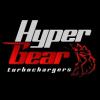High Flow Turbo For A R33
Announcements
-
Similar Content
-
Latest Posts
-
By aznriptide859 · Posted
Yes the gear for the R33/34 is different, it is red and has a different number of teeth. My part didn't come with that gear though, so I don't know how many teeth are on the red one. You'd have to reuse the 260RS/R33 gear, as long as it's not destroyed. Haha, as unfortunate as that might be it was working fine for about the first 1500km I've had the car for now. -
Update all thanks to the workshop manual, it lead me back to checking fuses as mentioned central locking and door open lights worked when acc was switched on. diagram attached shows two points of power 1. ACC and 2. Batt with the later being fused (#28) I did check the fuses using a multimeter but I must have stuffed that up also. Went back and checked the batt fuse in interior fuse box and you wouldn’t believe it… a blown fuse. replaced fuse and everything is now working as it should including the climate control thank you all with your positive insight and knowledge.
-
Where is the warning "That this thread is super old" I just went into a 5 year old thread, went to do a reply, and couldn't see anywhere obvious a warning of it being super old
-
Duncan is correct. Pitwork (and Toyota's own cheap brand "Drive Joy") were primarily created as brands to sell other manufacturers car parts. It would be weird if Nissan sold parts for Toyota vehicles with a Nissan logo on it, so they created Pitwork to sell parts for other brans Toyota, Honda etc. They are not the same as Nissan genuine parts, although they *do* meet Nissan's standards for replacement parts. They aren't supposed to be a substitute for genuine parts, but a cheaper alternative that is better than Ebay fake parts from you-know-where.
-










Recommended Posts
Create an account or sign in to comment
You need to be a member in order to leave a comment
Create an account
Sign up for a new account in our community. It's easy!
Register a new accountSign in
Already have an account? Sign in here.
Sign In Now